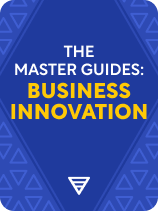

This article is an excerpt from the Shortform book guide to "The Master Guides: Business Innovation" by Shortform. Shortform has the world's best summaries and analyses of books you should be reading.
Like this article? Sign up for a free trial here.
What are the Doblin Innovation Firm’s 10 types of innovation? How do disruptive innovations fit into these categories?
A disruptive innovation is a product or service that is either entirely unprecedented or so vastly different from earlier versions that it has to be used differently. Larry Keeley, the cofounder of the Doblin Innovation Firm, categorizes disruptive innovations into 10 categories.
Continue reading to learn more about Doblin’s 10 types of innovation.
The 10 Types of Innovation
In Ten Types of Innovation, Larry Keeley and his Doblin colleagues Ryan Pikkel, Brian Quinn, and Helen Walters assert that all innovations can be classified into Doblin’s 10 types of innovation. They observe that most successful disruptive innovations (that is, most of the new products and services that reshape markets and generate substantial growth for the company) incorporate innovations in at least five of the 10 categories.
The key to success, then, is to understand what types of innovation your new offering incorporates and, if necessary, innovate in additional categories. The 10 categories that Keeley et al. identify are:
- Core product innovations: These innovations focus on improving your product or service enough to make it stand out as unique. That could mean adding features that increase its capabilities, removing features to make it simpler and more user-friendly, tailoring it to better meet a certain user’s needs, or just producing it to a higher standard of quality.
- Interfacing product innovations: With these innovations, you enhance the value or profitability of your product by improving how it interacts with other products. This might mean bundling your product with complementary products, enabling users to customize your product with third-party accessories, or giving users tools to create their own add-ons.
- Capability innovations: These innovations improve how you produce your product or provide your service, allowing you to make it better or more efficiently. Maybe you invest in greater automation to increase efficiency, make use of patented production processes, or crowdsource part of your service by giving users tools to help each other.
- Organizational innovations: With this type of innovation, you consider novel corporate structures or unique arrangements of personnel and assets that might give you an advantage. Maybe an exceptionally flat corporate hierarchy empowers your company by facilitating the free flow of information between upper management and line-level employees. Or maybe decentralizing production assets lets you adapt more rapidly to changing market conditions.
- Relational innovations: With this type of innovation, you find novel ways to collaborate with other organizations so that they bring additional value to your product—in other words, you find ways to leverage your relationships with other companies. For example, maybe you turn your service into a franchise, and you train local companies to service customers instead of you servicing them directly.
- Revenue stream innovations: These innovations encompass anything unique and beneficial about how a company makes money. For example, maybe you find a way to offer your product for free so that you make money through advertising or support contracts instead of sales, leading to wider adoption. Or maybe you attract a different class of customers by offering either a premium version of the product or a more affordable version.
- Distribution innovations: This type of innovation focuses on ease of purchasing—making it easy to distribute your product to your customer, either by making it easier for your customers to purchase or making the purchasing process stand out in a good way.
- Support innovations: These innovations support your customers in their use of your product in exceptional ways. For example, you could guarantee zero downtime and offer to reimburse business customers for any revenue they lose if your product does go down.
- Branding innovations: Through branding innovation, products become more valuable because your brand identity stands behind them. Your customers are willing to pay more for your products because they trust you to stand behind your products more than they trust other companies, because the way your company does business resonates with their values, or because your brand conveys social status in a way that others don’t.
- Gratification innovations: This type of innovation revolves around understanding your customers’ values and aspirations and designing your product so they get more gratification from using it. For example, you might let users customize the appearance of your product when they buy it so it becomes a form of self-expression for them.

———End of Preview———
Like what you just read? Read the rest of the world's best book summary and analysis of Shortform's "The Master Guides: Business Innovation" at Shortform.
Here's what you'll find in our full The Master Guides: Business Innovation summary:
- The reason why most innovations never lead to growth or profits
- Key principles for implementing innovative ideas that deliver value
- Advice from seven leading experts on overcoming innovation challenges






